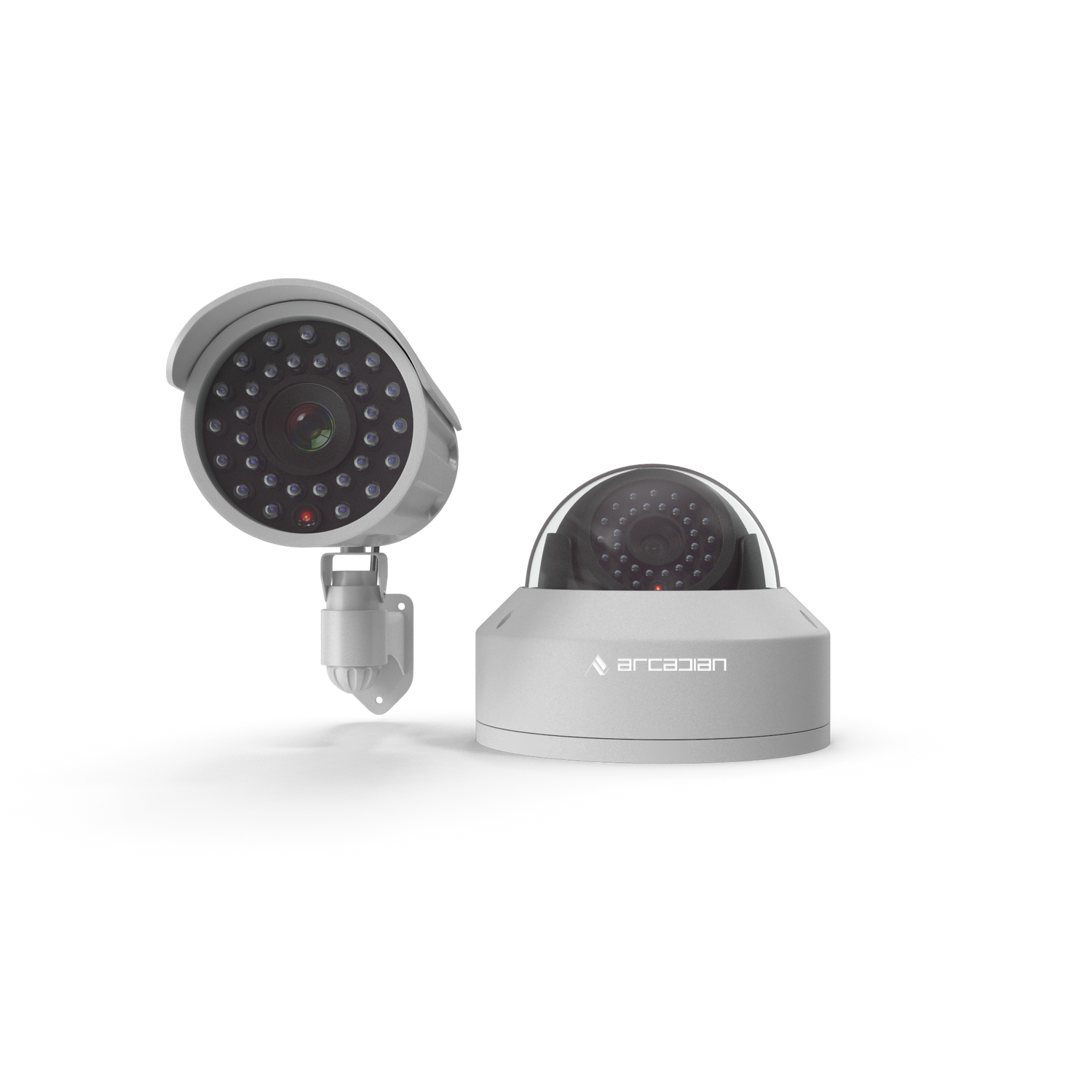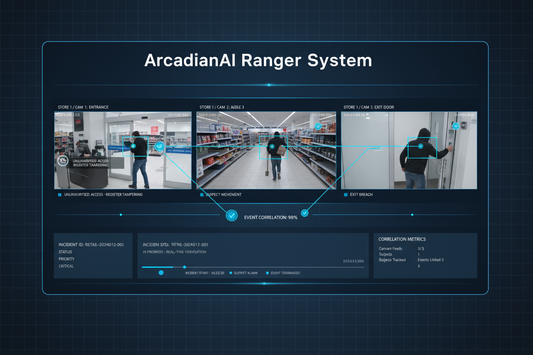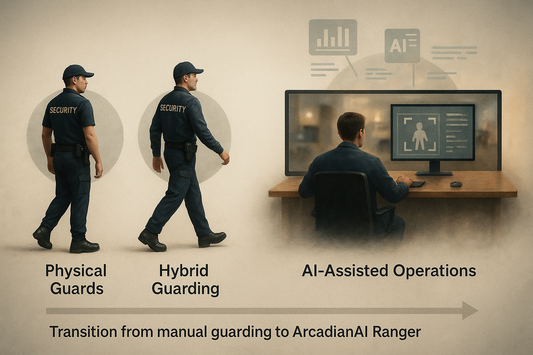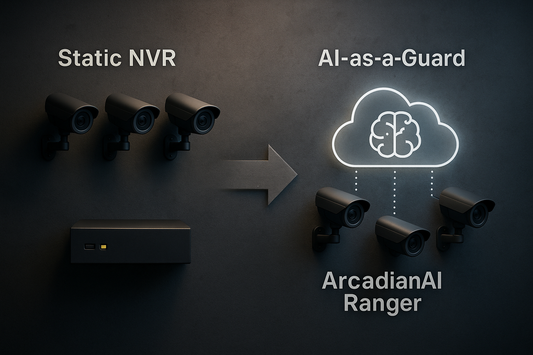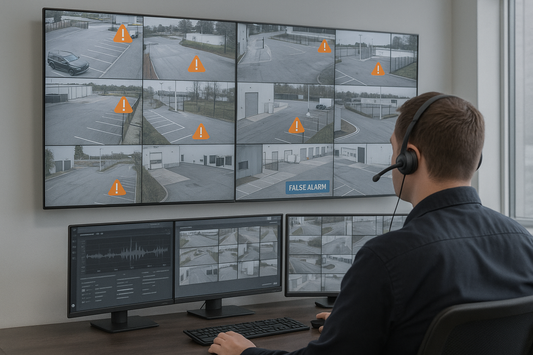The Importance of Cloud Video Surveillance in Smart Cities and Public Safety
Introduction As urbanization accelerates and cities grow larger and more complex, the concept of "smart cities" has emerged as a solution to manage the increasing demands on infrastructure, resources, and public safety. A cornerstone of smart city initiatives is the integration of cloud-based video surveillance systems, which play a crucial...

Introduction
As urbanization accelerates and cities grow larger and more complex, the concept of "smart cities" has emerged as a solution to manage the increasing demands on infrastructure, resources, and public safety. A cornerstone of smart city initiatives is the integration of cloud-based video surveillance systems, which play a crucial role in enhancing public safety, reducing crime, and improving emergency response times.
In this comprehensive blog post, we will explore the significance of cloud video surveillance in smart cities, particularly in the context of public safety in the United States and Canada. We will also examine the necessity of providing 911 services with access to live footage, supported by relevant statistics, to demonstrate how these technologies contribute to a safer, more efficient urban environment.
The Rise of Smart Cities and the Role of Video Surveillance
Smart cities use advanced technologies and data analytics to optimize city operations, improve the quality of life for residents, and enhance public safety. Cloud-based video surveillance is a key component of these systems, enabling real-time monitoring, data storage, and analysis across vast urban areas.
According to a report by the International Data Corporation (IDC), global spending on smart city initiatives was expected to reach $124 billion by 2020, with North America leading the charge. This investment reflects the growing recognition of the need for advanced infrastructure to manage urban challenges effectively.
The Benefits of Cloud Video Surveillance in Public Safety
1. Real-Time Monitoring and Rapid Response
One of the primary benefits of cloud video surveillance is its ability to provide real-time monitoring across an entire city. This capability is critical for public safety, as it allows law enforcement and emergency services to respond quickly to incidents as they unfold.
Statistics:
- A study by the Urban Institute found that in cities with extensive video surveillance networks, crime rates were reduced by up to 50% in monitored areas.
- In Chicago, where the city’s Operation Virtual Shield project integrates over 32,000 cameras into a single network, violent crime in areas with camera coverage decreased by 20%.
Example:
- During a large public event in Toronto, cloud-based cameras are used to monitor crowds in real-time. When a disturbance is detected, police are dispatched immediately, preventing the situation from escalating.
2. Enhanced Crime Prevention and Investigation
The presence of video surveillance cameras acts as a deterrent to criminal activity. Potential offenders are less likely to commit crimes when they know they are being watched. Additionally, cloud-based systems store footage in secure, offsite locations, ensuring that evidence is preserved and easily accessible for investigations.
Statistics:
- In Washington, D.C., a study by the Urban Institute found that the installation of surveillance cameras in high-crime areas led to a 23% reduction in crime within six months.
- A report from the Police Foundation in Canada highlighted that video footage played a key role in solving 60% of cases in municipalities equipped with surveillance systems.
Example:
- After a robbery in Vancouver, police use cloud-stored footage from nearby surveillance cameras to identify and apprehend the suspect within hours.
3. Integration with 911 Services for Immediate Access
Providing 911 services with access to live video footage is a critical component of enhancing public safety in smart cities. This integration allows emergency responders to assess situations in real-time, leading to more informed decision-making and faster response times.
Statistics:
- The National Institute of Justice (NIJ) in the U.S. reported that integrating video surveillance with 911 services can reduce emergency response times by up to 35%.
- A pilot program in Los Angeles demonstrated that when 911 operators had access to live camera feeds, the accuracy of dispatching appropriate resources increased by 40%.
Example:
- A caller reports a potential fire in a downtown Montreal building. Using live footage from cloud-based cameras, 911 operators confirm the situation and immediately dispatch fire crews, saving valuable time and potentially lives.
4. Scalability and Flexibility
Cloud-based surveillance systems offer unparalleled scalability, allowing cities to expand their networks without the need for significant additional infrastructure. This flexibility is particularly important as cities grow and the demands on public safety resources increase.
Statistics:
- According to a report by MarketsandMarkets, the global market for cloud-based video surveillance is projected to grow from $1.5 billion in 2020 to $3.3 billion by 2025, driven by the need for scalable and flexible solutions in smart cities.
- In Canada, cities like Toronto and Vancouver have seen rapid adoption of cloud-based systems, enabling them to scale their surveillance networks as part of broader smart city initiatives.
Example:
- As a mid-sized city in Alberta expands, it seamlessly adds new cameras to its cloud-based network, ensuring that newly developed areas receive the same level of surveillance and security as the city center.
5. Data Analytics and Predictive Policing
Cloud-based systems not only store vast amounts of video data but also enable advanced analytics and machine learning algorithms to process this data. These tools can identify patterns, predict potential crime hotspots, and assist law enforcement in deploying resources more effectively.
Statistics:
- The use of predictive policing algorithms has been shown to reduce property crime by up to 25% in cities like Los Angeles and Chicago.
- In Toronto, a pilot project using cloud-based analytics to predict and prevent crime in high-risk areas resulted in a 15% reduction in incidents over six months.
Example:
- Police in New York City use cloud-based video analytics to monitor real-time data and predict where crimes are likely to occur. By increasing patrols in these areas, they significantly reduce the incidence of property crimes.
Challenges and Considerations
While the benefits of cloud video surveillance in smart cities are clear, there are also challenges that need to be addressed:
1. Privacy Concerns
One of the main concerns surrounding the use of extensive video surveillance is privacy. Ensuring that surveillance systems do not infringe on individual rights requires robust data protection policies, transparency, and clear guidelines on how footage is used and who has access to it.
2. Cybersecurity Risks
As with any digital system, cloud-based surveillance networks are vulnerable to cyberattacks. Cities must invest in strong cybersecurity measures to protect their data and prevent unauthorized access.
3. Infrastructure and Connectivity
Implementing cloud-based surveillance requires reliable internet connectivity and infrastructure. In some areas, particularly in rural or underdeveloped regions, this can be a significant challenge.
Conclusion: A Safer Future with Cloud Video Surveillance
The integration of cloud-based video surveillance into smart cities represents a significant step forward in public safety. By providing real-time monitoring, enhancing crime prevention, and enabling faster, more informed emergency responses, these systems are helping to create safer urban environments across the United States and Canada.
The necessity for 911 services to have access to live footage is clear: it not only improves the accuracy and speed of emergency responses but also helps prevent crimes before they escalate. As cities continue to grow and evolve, the adoption of cloud-based video surveillance will be essential in ensuring that public safety keeps pace with these changes.
While there are challenges to consider, such as privacy concerns and cybersecurity risks, the benefits of cloud video surveillance far outweigh the drawbacks. With proper implementation and regulation, these systems can help reduce crime rates, protect citizens, and build the smart cities of the future.
By embracing cloud technology, cities can ensure that they are not only safer but also more resilient and responsive to the needs of their residents. As the statistics show, the impact of cloud video surveillance on public safety is profound—and it’s a trend that is set to continue as more cities adopt these cutting-edge solutions.

Security is like insurance—until you need it, you don’t think about it.
But when something goes wrong? Break-ins, theft, liability claims—suddenly, it’s all you think about.
ArcadianAI upgrades your security to the AI era—no new hardware, no sky-high costs, just smart protection that works.
→ Stop security incidents before they happen
→ Cut security costs without cutting corners
→ Run your business without the worry
Because the best security isn’t reactive—it’s proactive.
